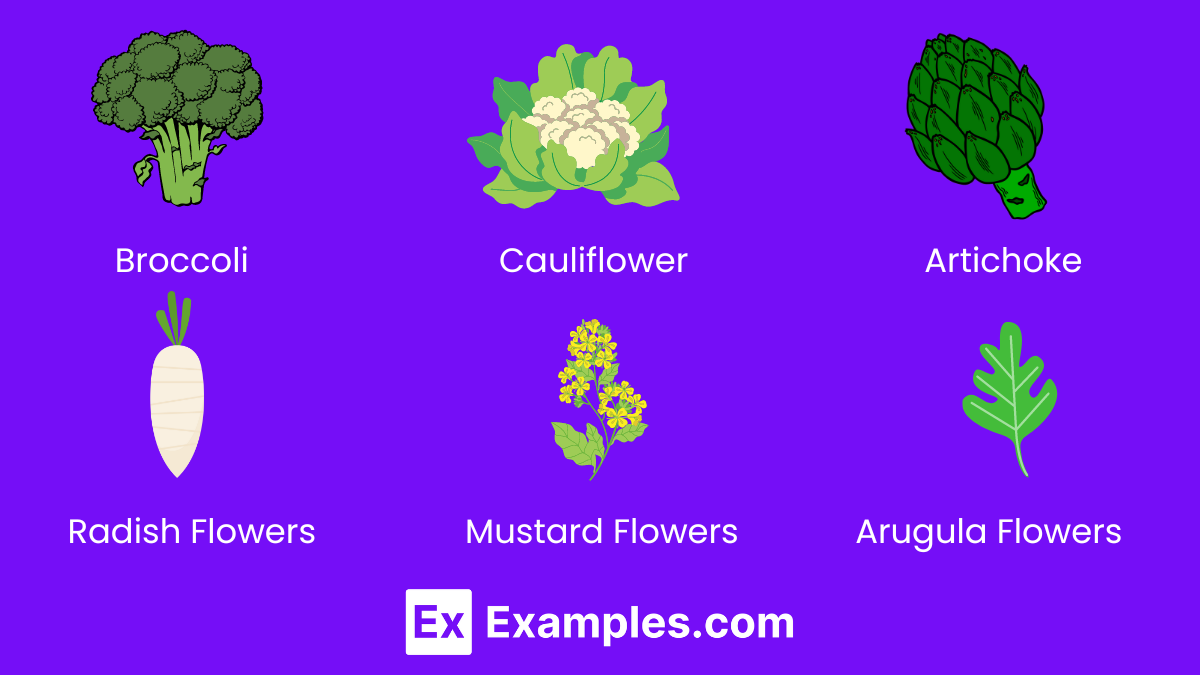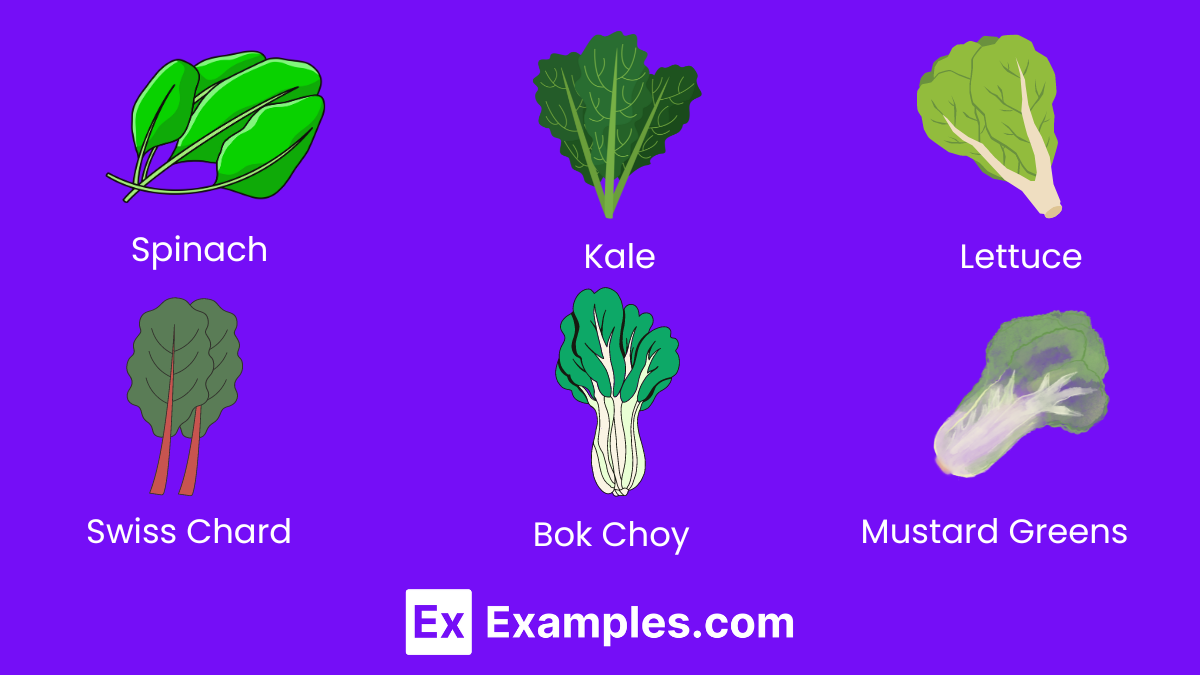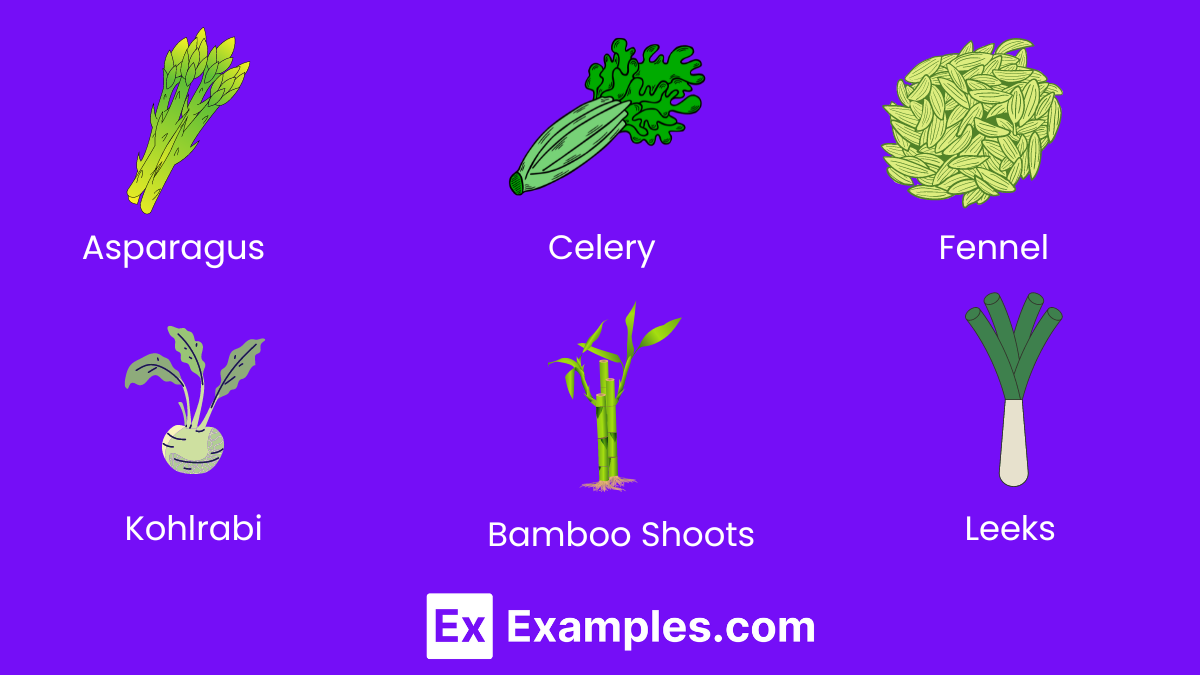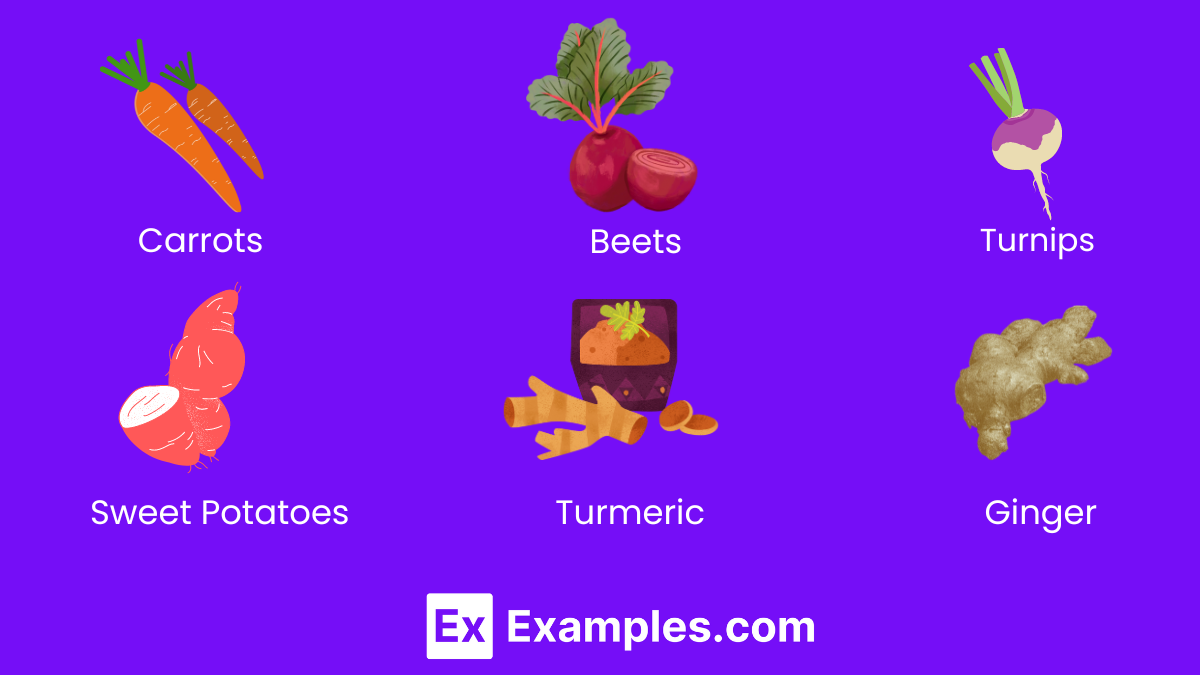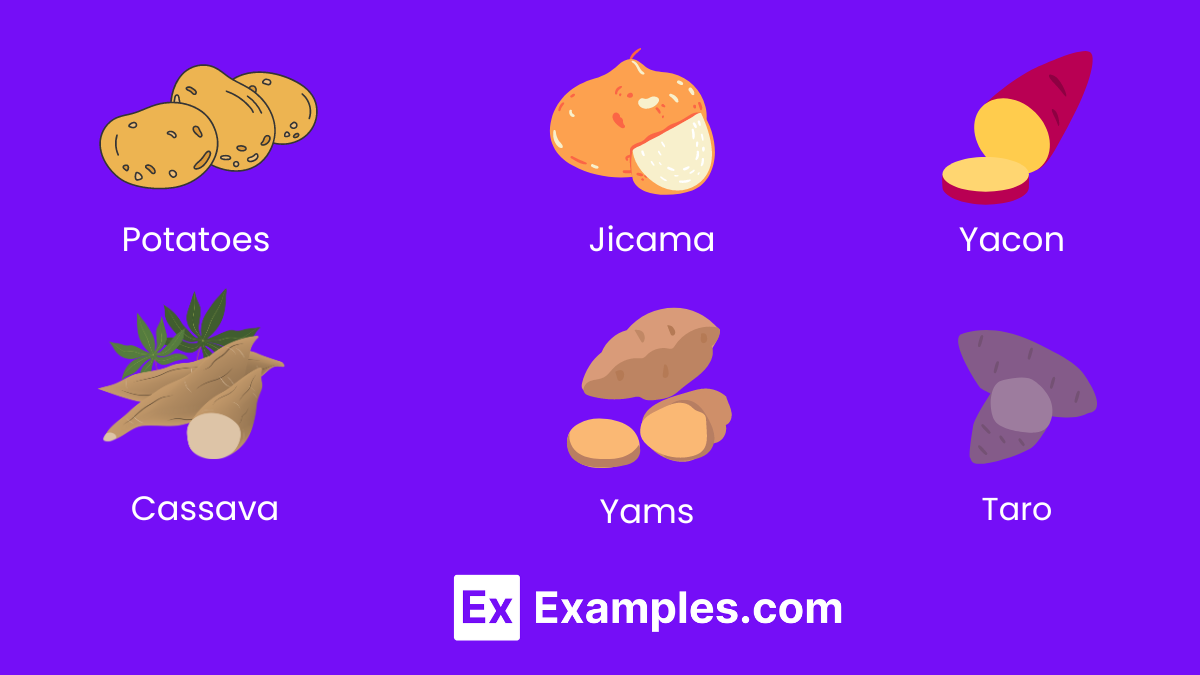100+ Vegetable Names: Meaning , Types, Uses, PDF
Discover the vast and colorful world of vegetables! From the everyday staples like carrots and potatoes to exotic varieties that might not grace your dinner table as often, this guide is a treasure trove of edible plants. Vegetables are not only fundamental to our health, offering a plethora of vitamins and minerals, but they also bring a burst of flavors and textures to our meals. Dive into our list and perhaps you’ll find some new favorites to add to your culinary repertoire.
Download List of Vegetable Names - PDF
List of Vegetable Names
Embarking on a journey through the vegetable kingdom reveals a rich tapestry of flavors, textures, and nutrients, each variety offering its own unique contributions to our diets and dishes. Vegetables form the backbone of a balanced diet, providing essential vitamins, minerals, and fiber that support overall health and well-being. This extensive list of vegetables, arranged from A to Z, showcases the incredible diversity found in nature, from the familiar favorites that grace our daily meals to the more exotic varieties that invite culinary exploration. Including a wide array of vegetables in your diet not only enhances the nutritional value of your meals but also introduces a kaleidoscope of colors and flavors that can elevate even the simplest dish to something extraordinary. Let this list inspire you to try new ingredients, experiment with different cooking methods, and discover the endless possibilities that vegetables offer.
| Artichoke | Asparagus | Arugula | Aubergine |
| Broccoli | Brussels Sprouts | Beetroot | Bell Pepper |
| Cabbage | Carrot | Cauliflower | Celery |
| Daikon | Dandelion Greens | Edamame | Eggplant |
| Fennel | Fiddleheads | Garlic | Ginger |
| Horseradish | Jicama | Kale | Kohlrabi |
| Leek | Lettuce | Mushroom | Mustard Greens |
| Napa Cabbage | Okra | Onion | Parsnip |
| Pea | Potato | Quinoa (Leaf) | Radish |
| Rutabaga | Spinach | Squash | Sweet Potato |
| Tomato | Turnip | Ube | Watercress |
| Yam | Zucchini | Xigua | Water Spinach |
| Yacon | Zedoary | Velvet Bean | Winter Squash |
| Wasabi | Yautia | Zucca | Winged Bean |
| Yardlong Bean | Zebra Eggplant | Water Chestnut | Wax Gourd |
| Taro | Swiss Chard | Sorrel | Shallots |
| Scallion | Salsify | Romanesco | Rocket (Arugula) |
| Rhubarb | Red Onion | Radicchio | Pumpkin |
| Purslane | Purple Sprouting Broccoli | Portobello Mushroom | Poblano |
| Plantain | Pinto Beans | Pimiento | Pigeon Pea |
| Pattypan Squash | Parsley Root | Paprika | Palm Heart |
| Pak Choi | Oyster Plant | Orache | Olives |
Different Types of Vegetables
The vegetable kingdom is a mosaic of colors, textures, and flavors, offering an array of choices for every palate. From leafy greens that whisper the tales of spring to robust root vegetables that ground us in earthy flavors, there’s a vegetable for every season and reason. This guide delves into the different types of vegetables, showcasing their diversity and the vibrancy they bring to our plates. Whether you’re a culinary expert or a kitchen novice, the world of vegetables holds endless possibilities for exploration and enjoyment.
Flower Vegetables
Dive into the vibrant world of Flower Vegetables, where blossoms turn into nutritious delights. These vegetables are not only a feast for the eyes but are packed with flavors and essential nutrients. Perfect for engaging students in botany and nutrition discussions, they offer a visual and tasty exploration of plant life cycles. Introduce these to encourage curiosity and expand vocabulary in a fun, educational setting.
- Broccoli – The green flower heads and stalk are rich in vitamins.
- Cauliflower – Known for its dense, white flower heads.
- Artichoke – A unique vegetable with edible flower buds.
- Zucchini Flowers – Bright yellow flowers, often eaten stuffed or fried.
- Squash Blossoms – Delicate flowers from the squash plant, edible and tasty.
- Chive Blossoms – Purple flowers that add a mild onion flavor to dishes.
- Arugula Flowers – Small, edible white flowers with a peppery taste.
- Radish Flowers – Edible, spicy flowers that add a zing to salads.
- Mustard Flowers – Small yellow flowers from the mustard plant, spicy and edible.
- Borage Flowers – Blue star-shaped flowers, known for their cucumber-like taste.
Leafy Vegetables
Leafy Vegetables are essential for a balanced diet, offering a wide range of nutrients, including vitamins, minerals, and fiber. Engage students with the diverse world of greens, from the crispness of lettuce to the robust flavors of kale. These vegetables are perfect for lessons on healthy eating, photosynthesis, and plant anatomy, making learning interactive and flavorful.
- Spinach – A versatile green, rich in iron and vitamins.
- Kale – Known for its dense nutrients and dark, leafy greens.
- Lettuce – A staple in salads, available in various types.
- Swiss Chard – Characterized by its colorful stems and green leaves.
- Collard Greens – Large, dark green leaves, often cooked or steamed.
- Arugula – Peppery, leafy green, great in salads.
- Mustard Greens – Spicy-tasting leaves, used in both raw and cooked dishes.
- Bok Choy – A type of Chinese cabbage with crisp, white stems and green leaves.
- Watercress – Small, peppery leafy vegetable, often used in salads.
- Romaine Lettuce – Long, dark green leaves, crunchy texture, ideal for Caesar salads.
Stem Vegetables
Explore the crunch and texture of Stem Vegetables, where the stem or stalk of the plant is the star. These vegetables add a crisp bite and a burst of flavor to any dish. Introducing them in the classroom can spark discussions about plant structure and the importance of different plant parts in our diet.
- Asparagus – Tender, green stalks, rich in nutrients.
- Celery – Crunchy, water-rich stalks, often used in salads and soups.
- Rhubarb – Red, tart stalks, commonly used in pies and desserts.
- Kohlrabi – A bulbous stem vegetable, tastes similar to broccoli stems.
- Bamboo Shoots – Young shoots of the bamboo, used in Asian cuisine.
- Leeks – Long, white stalks with green leaves, mild onion flavor.
- Fennel – Characterized by its bulbous stem and licorice-like flavor.
- Chard – The thick, crunchy stems of Swiss chard, often cooked.
- Broccolini – Edible stems, leaves, and flower buds, a hybrid of broccoli.
- Cardoon – Stalks similar to celery but with an artichoke-like flavor.
Fruit Vegetables
Fruit Vegetables bring sweetness and color to the plate, derived from the fruiting part of the plant. These vegetables are excellent for engaging students with the concept of fruits vs. vegetables, discussing plant reproduction, and the culinary versatility of these plant parts.
- Tomatoes – Juicy and versatile, used in a myriad of dishes.
- Bell Peppers – Available in various colors, sweet and crunchy.
- Eggplant – Purple, sponge-like texture, great for grilling or baking.
- Cucumbers – Cool and crisp, perfect for salads.
- Zucchini – Mild flavor, used in both savory and sweet dishes.
- Pumpkins – Orange, used in pies, soups, and as a fall decoration.
- Squash – Includes varieties like butternut and acorn, sweet and nutty.
- Avocado – Creamy texture, rich in healthy fats.
- Okra – Green, pod-like vegetable, used in stews and fried dishes.
- Chayote – Green, apple-like vegetable, mild in flavor.
Root Vegetables
Root Vegetables delve deep into the earth to absorb nutrients, making them rich in flavor and health benefits. These underground treasures, from the spicy bite of radishes to the sweet, earthy essence of carrots, are a testament to nature’s bounty. Ideal for lessons on plant growth and nutrition, they offer a grounding perspective on how and where our food originates, enriching students’ understanding of nature’s cycles.
- Carrots – Crunchy, sweet, and versatile, high in beta-carotene.
- Beets – Deep red, earthy flavor, packed with vitamins and minerals.
- Radishes – Small, spicy, and crisp, perfect for adding a kick to salads.
- Turnips – Mildly spicy, can be eaten raw or cooked.
- Parsnips – Sweet and nutty, similar in shape to carrots.
- Rutabagas – Larger than turnips, with a sweet and earthy taste.
- Sweet Potatoes – Orange, sweet, and starchy, high in vitamins A and C.
- Yams – Starchy and sweet, often confused with sweet potatoes.
- Ginger – Spicy and aromatic, used both as a spice and a medicine.
- Turmeric – Bright orange, earthy, and used for its flavor and color.
Tuber Vegetables
Tuber Vegetables are the underground storage organs of plants, swelling with nutrients and energy. They are a staple in many diets worldwide, offering a starchy base for a myriad of dishes. Introducing tubers in educational settings can illuminate topics like plant adaptation and storage, while also discussing their culinary diversity and cultural significance.
- Potatoes – Staple starch, versatile in cooking, from boiling to frying.
- Sweet Potatoes – Sweet, orange-fleshed, rich in vitamins.
- Yams – Tropical tuber with a sweeter taste than potatoes.
- Jerusalem Artichokes – Nutty flavor, also known as sunchokes.
- Jicama – Crunchy and starchy, with a mildly sweet taste.
- Taro – Starchy root with a nut-like flavor, used in Asian and Pacific cuisines.
- Cassava – Also known as yuca, a staple in tropical diets.
- Ulluco – Brightly colored, slightly sweet tuber from the Andes.
- Oca – Small, colorful tuber with a tangy flavor.
- Yacon – Sweet, crunchy tuber known for its apple-like taste.
Bulb Vegetables
Bulb Vegetables are the swollen, underground parts of certain plants, known for their pungent flavors and aromas. They play a crucial role in culinary traditions worldwide, adding depth and complexity to dishes. Teaching about bulb vegetables can spark discussions on plant anatomy, the use of vegetables in flavoring, and the importance of these bulbs in global cuisines.
- Onions – Fundamental in cooking, adding sweetness and depth.
- Garlic – Strong, pungent flavor, used as a base for many dishes.
- Turnips: Turnips are root vegetables with round or cylindrical bulbs that have a peppery flavor.
- Leeks – Mild onion-like flavor, used in soups and stews.
- Fennel – Licorice-flavored bulb, used in salads and cooking.
- Scallions – Also known as green onions, mild and versatile.
- Chives – Mild and delicate, used as a garnish.
- Garlic Scapes – Curly green stems of garlic, mild and sweet.
- Kohlrabi – Slightly sweet, turnip-like bulb.
- Spring Onions – Milder than regular onions, with a bulbous base.
Benefits of eating vegetables
- Nutrient Rich: Vegetables are packed with essential vitamins (like A, C, and K), minerals (such as potassium and magnesium), and antioxidants, which are vital for maintaining overall health.
- Low in Calories: Most vegetables are low in calories but high in volume, helping to feel full without consuming a lot of calories, aiding in weight management.
- Heart Health: The fiber, potassium, and antioxidants in vegetables can help reduce the risk of heart diseases, including heart attack and stroke.
- Digestive Health: High fiber content in vegetables helps maintain bowel health, reduce constipation, and lower the risk of digestive disorders.
- Reduced Risk of Chronic Diseases: Regular consumption of vegetables is linked to a lower risk of conditions such as obesity, diabetes, and certain types of cancers.
- Eye Health: Nutrients like lutein and zeaxanthin in green leafy vegetables can protect against age-related eye diseases.
- Skin Health: Vitamins and water content in vegetables help hydrate the skin and reduce signs of aging.
- Immune Support: Vitamins A and C, found in many vegetables, are crucial for a strong immune system.
- Blood Pressure Management: Potassium-rich vegetables like sweet potatoes and tomatoes can help maintain healthy blood pressure levels.
- Mental Well-being: Certain vegetables contain nutrients that may contribute to improved mood and mental health
Various nutrients provided by the vegetables and their uses in the body
| Nutrient | Vegetables | Functions |
|---|---|---|
| Folate | Spinach, Asparagus, Broccoli | Supports DNA synthesis, cell division, and is crucial during pregnancy for fetal development. |
| Copper | Mushrooms, Sweet Potatoes, Spinach | Essential for red blood cell formation, cardiovascular health, and supports the immune system. |
| Magnesium | Spinach, Swiss Chard, Pumpkin Seeds | Vital for muscle and nerve function, blood glucose control, and bone health. |
| Zinc | Mushrooms, Spinach, Peas | Important for immune function, wound healing, DNA synthesis, and cell division. |
| Phosphorous | Lentils, Edamame, Corn | Supports bone health, energy production, and is a critical component of cell membranes. |
| Selenium | Brazil Nuts, Sunflower Seeds, Mushrooms | Plays a key role in metabolism and thyroid function, and has antioxidant properties. |
| Potassium | Sweet Potatoes, Beet Greens, Potatoes | Essential for maintaining normal fluid balance, muscle contractions, and nerve signals. |
| Vitamin A | Carrots, Sweet Potatoes, Kale | Important for vision, immune function, and skin health. |
| Vitamin C | Bell Peppers, Broccoli, Brussels Sprouts | Supports immune health, antioxidant function, and is necessary for collagen production. |
| Vitamin E | Spinach, Broccoli, Avocado | Acts as an antioxidant, protecting cells from damage, and supports immune function. |
| Vitamin K | Kale, Spinach, Brussels Sprouts | Crucial for blood clotting and bone metabolism. |
Effective ways to include vegetables in your diet
Incorporating vegetables into your diet is a cornerstone of healthy eating, offering a plethora of nutrients essential for maintaining optimal health. Vegetables are versatile, flavorful, and can be seamlessly integrated into meals in a variety of ways. Here are some effective strategies to enhance your diet with the goodness of vegetables:
- Start with Breakfast: Add spinach to smoothies, tomatoes to omelets, or avocado on whole-grain toast to kickstart your day with a serving of vegetables.
- Snack Smart: Replace chips and cookies with carrot sticks, bell pepper slices, or cucumber with hummus for a crunchy, nutrient-rich snack.
- Salads as Meals: Create hearty salads with a mix of several vegetables, topped with lean protein, nuts, and a vinaigrette for a fulfilling meal.
- Vegetable-Based Soups: Soups are a great way to consume multiple servings of vegetables. Add lentils or beans for extra protein and fiber.
- Veggie Noodles: Use a spiralizer to make noodles from zucchini or carrots as a low-carb, nutrient-dense alternative to pasta.
- Incorporate in Sauces: Blend vegetables like spinach, carrots, or pumpkin into pasta sauces or soups to enhance nutritional content without compromising taste.
- Roast for Flavor: Roasting vegetables like Brussels sprouts, cauliflower, or sweet potatoes brings out their natural sweetness and adds a satisfying crunch.
- Experiment with Stir-fries: Stir-frying allows for a quick, delicious way to combine a variety of vegetables with your favorite proteins and sauces.
- Grill for a Smoky Taste: Grilled vegetables like asparagus, mushrooms, and peppers make for a tasty side dish or salad topping.
- Blend into Baked Goods: Incorporate grated zucchini or carrots into muffins, bread, or pancakes for a moist texture and nutritional boost.
Recommended servings of vegetables for each age group
| Age Group | Age Range | Recommended Quantity of Vegetables |
|---|---|---|
| Toddlers | 1-3 years | 1 cup daily |
| Young Children | 4-8 years | 1.5 cups daily |
| Pre-Teens | 9-13 years (Girls), 9-13 years (Boys) | 2 cups daily (Girls), 2.5 cups daily (Boys) |
| Teenagers | 14-18 years (Girls), 14-18 years (Boys) | 2.5 cups daily (Girls), 3 cups daily (Boys) |
| Adults | 19-50 years (Women), 19-50 years (Men) | 2.5 cups daily (Women), 3 cups daily (Men) |
| Older Adults | 51+ years (Women), 51+ years (Men) | 2 cups daily (Women), 2.5 cups daily (Men) |
Scientific Vegetable Names
Scientific names provide a universal language to identify plants precisely, avoiding common name confusion. Here are the scientific names for some common vegetables:
- Carrot: Daucus carota
- Tomato: Solanum lycopersicum
- Potato: Solanum tuberosum
- Broccoli: Brassica oleracea var. italica
- Spinach: Spinacia oleracea
- Lettuce: Lactuca sativa
- Onion: Allium cepa
- Garlic: Allium sativum
- Bell Pepper: Capsicum annuum
- Cucumber: Cucumis sativus
- Pumpkin: Cucurbita pepo
- Sweet Corn: Zea mays var. saccharata
- Pea: Pisum sativum
- Eggplant (Aubergine): Solanum melongena
- Zucchini (Courgette): Cucurbita pepo var. cylindrica
- Kale: Brassica oleracea var. sabellica
- Cauliflower: Brassica oleracea var. botrytis
- Asparagus: Asparagus officinalis
- Beet (Beetroot): Beta vulgaris var. conditiva
- Radish: Raphanus sativus
What is the importance of learning vegetable names?
Learning vegetable names is not just about expanding vocabulary; it’s a fundamental step towards nurturing a healthy relationship with food. This knowledge empowers individuals to make informed dietary choices, explore a variety of flavors, and understand the nutritional value of what they consume. It lays the foundation for culinary creativity, encourages healthy eating habits, and fosters an appreciation for the diversity of nature’s bounty.
- Nutritional Awareness: Understanding the health benefits of different vegetables.
- Culinary Skills: Enhancing cooking abilities by knowing a wide range of ingredients.
- Cultural Appreciation: Exploring vegetables common in various cuisines broadens cultural horizons.
- Gardening Knowledge: Helps in identifying and growing a variety of vegetables.
- Environmental Consciousness: Recognizing seasonal vegetables promotes sustainable eating practices.
Which vegetable contributes to improving vision?
Carrots are widely recognized for their contribution to improving vision. They are rich in beta-carotene, a type of vitamin A, which is crucial for good vision, especially in low light conditions. Beta-carotene helps protect the surface of the eye (cornea) and is essential for maintaining eye health. Additionally, carrots contain lutein and zeaxanthin, antioxidants that can help protect against age-related macular degeneration and cataracts.
In conclusion, familiarizing students with vegetable names not only enriches their vocabulary but also fosters an appreciation for healthy eating and nature’s diversity. This foundational knowledge encourages curiosity about food origins, promotes nutritional awareness, and lays the groundwork for lifelong healthy habits. Engaging with these vibrant and nutritious earth offerings opens up a world of learning and discovery, making it an essential part of education




